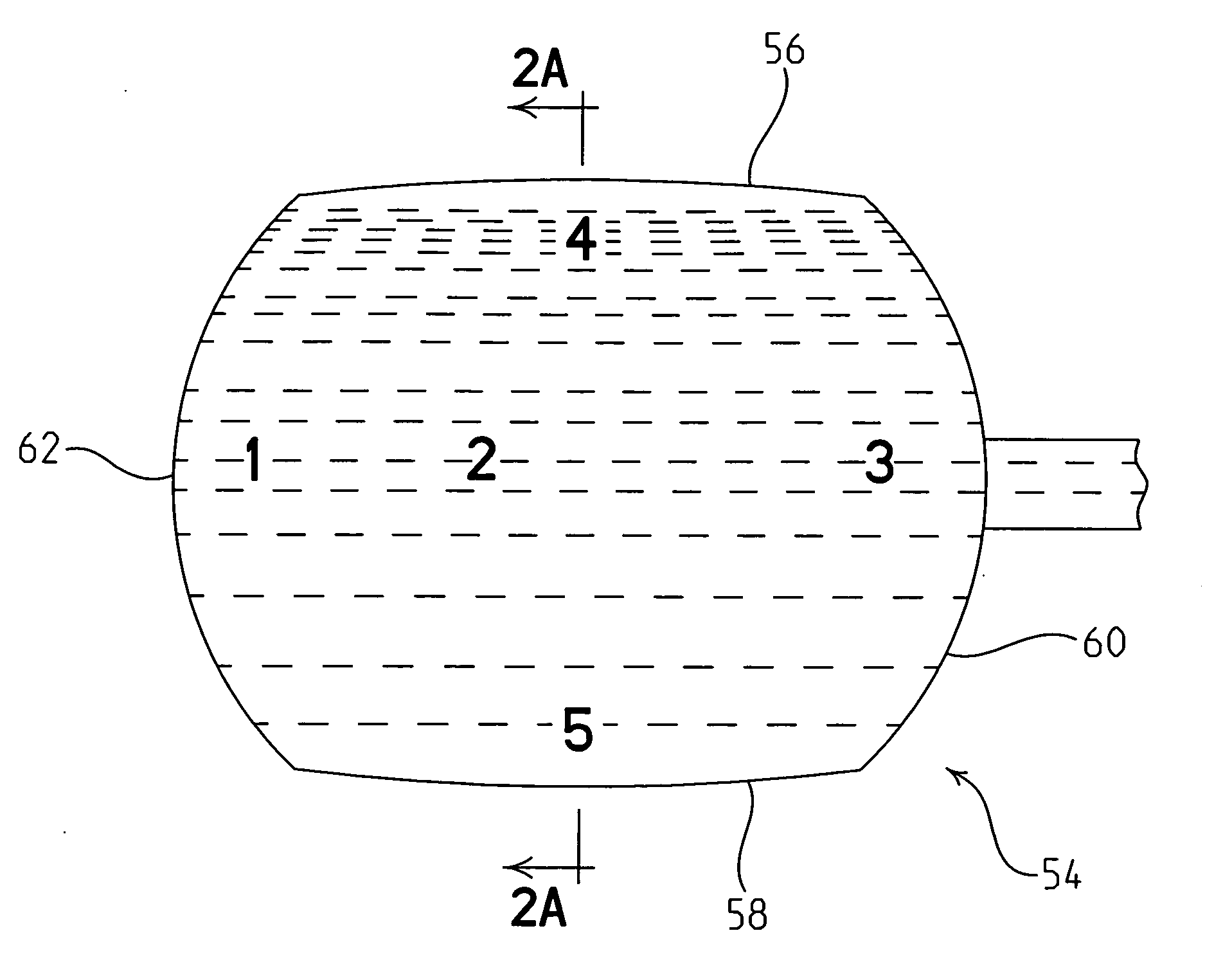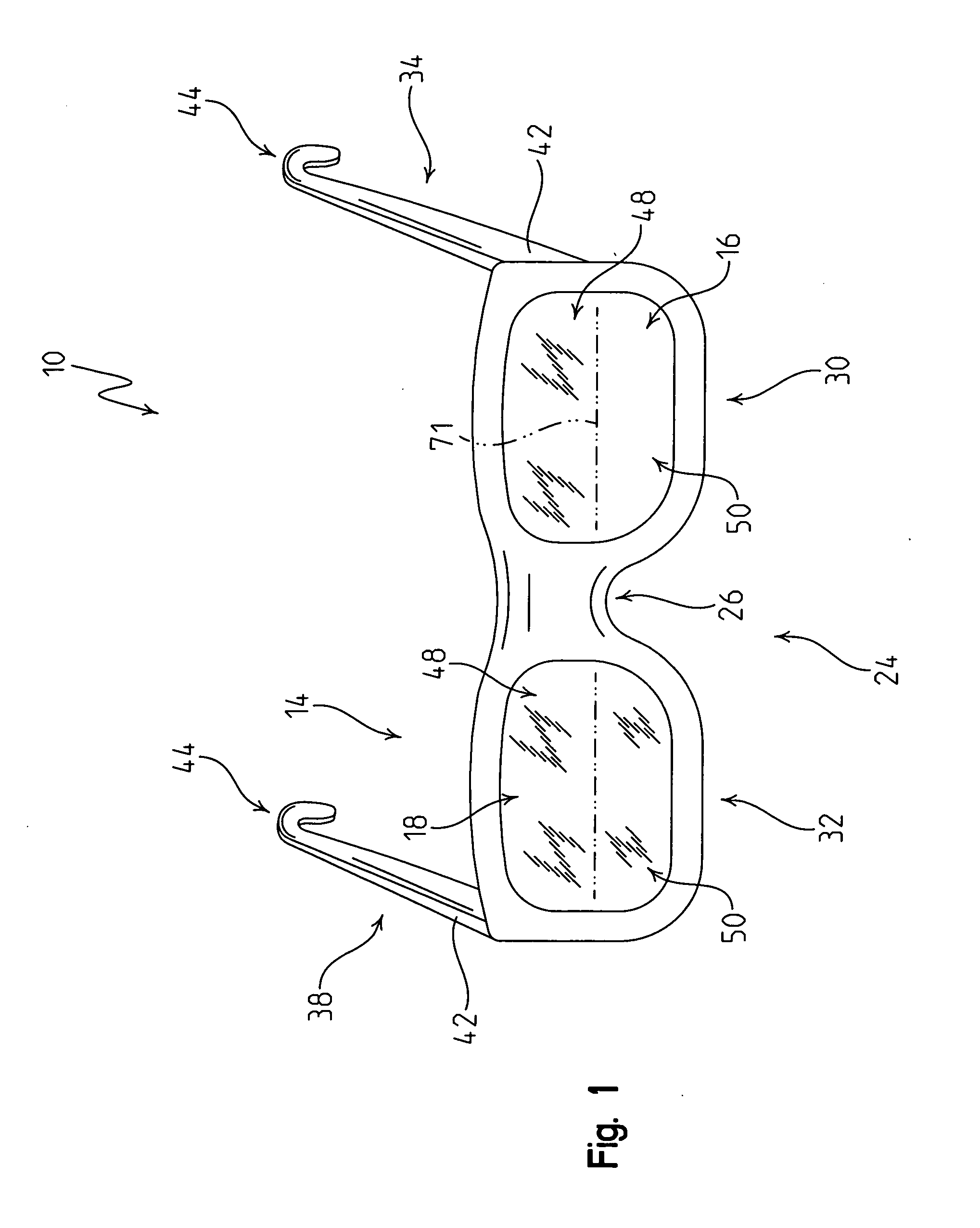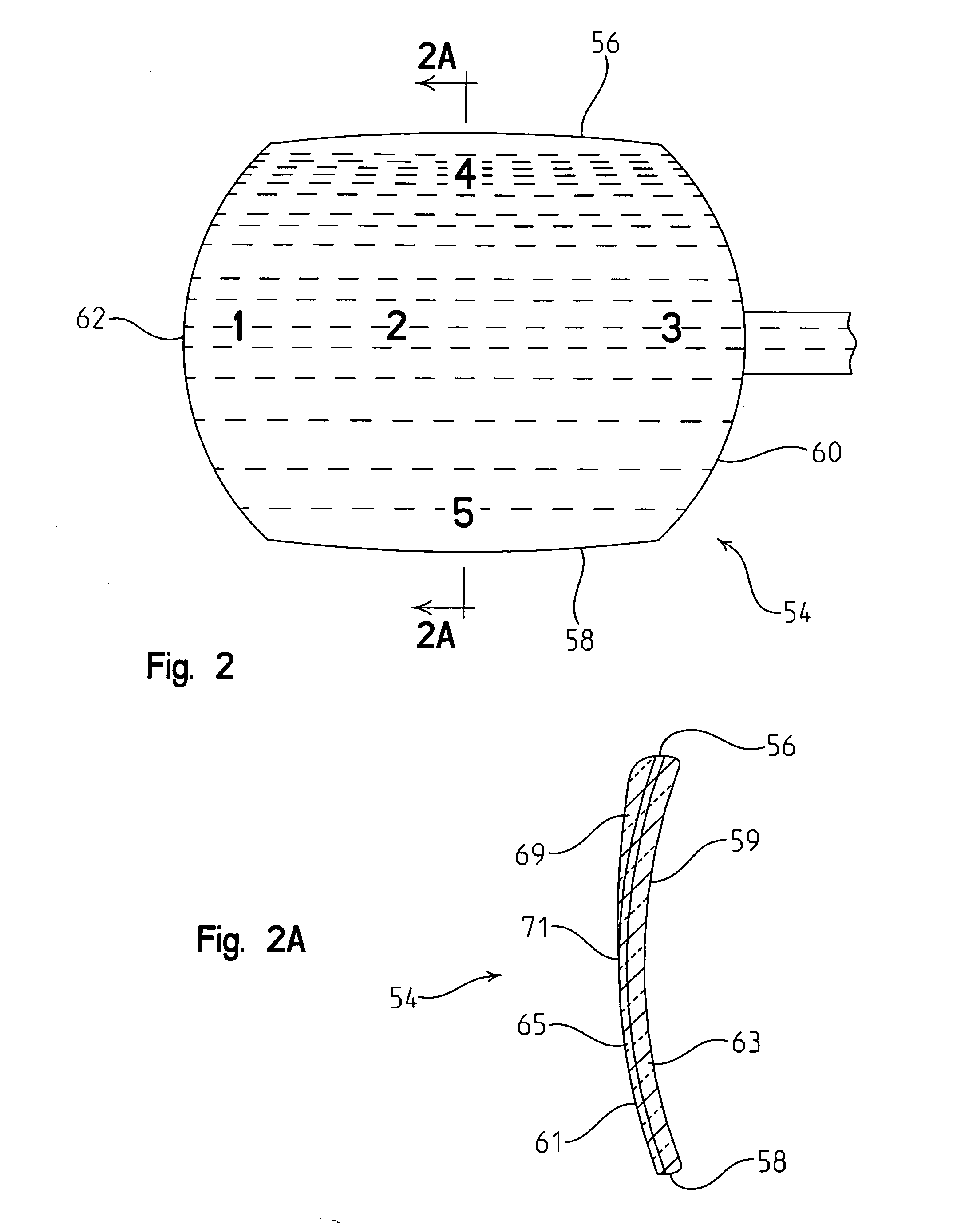Sunglass lens
a technology for sunglasses and lenses, applied in the field of sunglasses, can solve the problems of color distortion, increased eye strain, and uneven tinting of the entire area of the lens, and achieve the effects of reducing the intensity of the sun's brightness, blocking out glare, and brightening the intensity of yellow tennis balls
- Summary
- Abstract
- Description
- Claims
- Application Information
AI Technical Summary
Benefits of technology
Problems solved by technology
Method used
Image
Examples
Embodiment Construction
[0031]Turning now to FIG. 1, a pair of sunglasses 10 is schematically represented. The sunglasses 10 include a frame 14, that can be made out of metal, plastic or one of a variety of other materials. The frame includes a first, or left lens 16 that is made of a transparent glass or plastic material, and a second or right lens 18 that is also made from a glass or plastic material. Although lenses can be made from glass, most lenses today are made from some form of plastic material, including polycarbonate, which has good optical and refractive properties.
[0032]Some lenses are non-corrective lenses with the anterior and posterior curvatures of the lenses designed to provide little or no refractive properties. Other lenses, however, are corrective lenses. Polycarbonate is a lens material that has a relatively high index of refraction and a superior degree of impact resistance making it an excellent choice for active sport sunglasses for either prescription or non-prescription wear. Pol...
PUM
 Login to View More
Login to View More Abstract
Description
Claims
Application Information
 Login to View More
Login to View More - R&D
- Intellectual Property
- Life Sciences
- Materials
- Tech Scout
- Unparalleled Data Quality
- Higher Quality Content
- 60% Fewer Hallucinations
Browse by: Latest US Patents, China's latest patents, Technical Efficacy Thesaurus, Application Domain, Technology Topic, Popular Technical Reports.
© 2025 PatSnap. All rights reserved.Legal|Privacy policy|Modern Slavery Act Transparency Statement|Sitemap|About US| Contact US: help@patsnap.com



